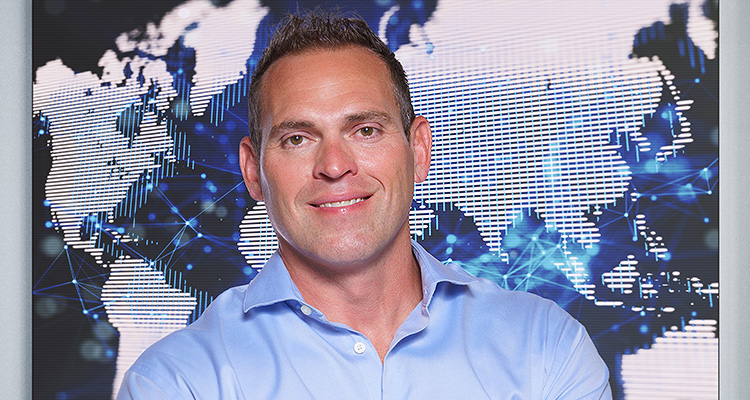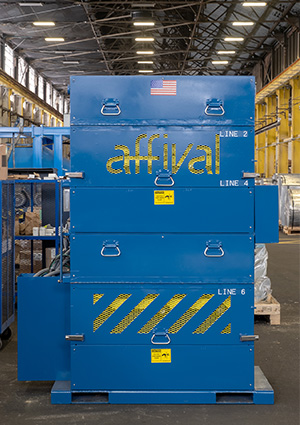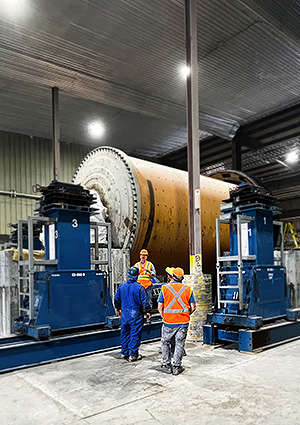
With a presence in most of the world’s steel mills, Opta Group offers a diverse product portfolio designed for optimal performance
The leading supplier of performance materials and specialty chemical solutions Opta Group (Opta), manufactures a diverse product portfolio designed to meet the specialized needs of the metallurgical, glass, cement, and chemical end-markets.
As the business heads towards its 150th year, Manufacturing Today speaks to Mike Ball, Global Chief Operating Officer. “The group can trace its foundation back to the 1880s, where it started off as a local sand supplier,” he begins. “It evolved its operations via various industrial solutions, until the amalgamation of two Speyside Equity portfolio companies in 2019. The combination of Opta Minerals and SKW Metallurgie formed Opta Group and created a premier specialty chemicals platform servicing numerous markets and industries. 
“The acquisition by Speyside was transformational and significantly accelerated our growth, not only providing financial backing, but also exceptional strategic support,” he says. “Their expertise in managing industrial companies is really what helped us streamline operations, optimize performance and identify new growth opportunities.
“Specifically, I’d say Speyside challenged our operational effectiveness. They pushed us with automation, and the adoption of lean manufacturing principles. They’ve been supportive of our R&D commitments and helped us define our go-to-market strategies in each region, as well as streamline and standardize our processes from a commercial standpoint.”
Today Opta employs over 700 people worldwide, over four continents, 11 countries and 28 locations, with sales offices, production, and distribution facilities throughout North America, South America, Europe, and Asia. “Our team members are deeply embedded in our customers’ supply chains and actively engage with their processes providing blending, formulation, and production expertise,” explains Mike.
Acquisition strategy
Opta’s products and services are delivered via its various brands, which, as Mike clarifies, can be categorized into three divisions – Molten Solutions, Infrastructure and Quab Chemicals. “Molten Solutions consists of four brands: Opta, Affival, Tecnosulfur and SKW, designing chemical solutions customized for hot metal desulfurization, slag conditioning and fluxing, cored-wire treatment, as well as process optimization technology.”
The Infrastructure Division offers Industrial Minerals and Re-Act 4TM, while the Quab Division provides cationizing reagents that add a positive charge to various substrates. As Mike notes, the product portfolio has expanded through several acquisitions over the last nine months. “Essentially, we want to offer a metallurgical solution for every step of the iron or steel making process. We look for companies that complement our existing product lines, add products we didn’t offer before, and enhance our technological capabilities. One of our recent acquisitions served as a springboard for launching onsite equipment, real-time process feedback, and monitoring services within our customers’ production processes. Two other recent acquisitions expanded our portfolio and strengthened our sustainability initiatives by increasing our use of non-virgin materials. We have our targets set on at least two, perhaps three more acquisitions by the end of this year, which would take us to over 850 employees.”
Opta’s acquisition criteria also include a shared commitment to innovation, sustainability, and customer service. “We ensure they fit into our culture, which is one of continuous improvement, always striving to do better, as well as a total dedication to safety and quality,” notes Mike.
Global expansion
While acquisition remains a vital element of Opta’s expansion strategy, it isn’t the only approach. The organization is currently constructing a new facility in India, located near the bigger steel making regions of the country. “A one-million-dollar, state-of-the-art cored wire production line is scheduled to commence operations near Raipur, Chhattisgarh, during the third quarter of this year,” Mike reveals. “This will further increase our global footprint, as well as meet the rising demands in the region and boost our production capabilities, so we can provide tailored metallurgical solutions to support the local market. We are also looking at some additional facilities in India as we see it as a region with growing demand.”
Opta is exploring additional facilities in other growth regions. While not able to divulge specifics, Mike hints at locations: “Establishing a presence in the Middle East and southern US could enhance operational efficiency, customer reach, and strategic positioning,” he says. “We are also currently vetting locations for establishing an operational footprint in Turkey that would house R&D and technical resources. These resources would work in parallel with our regional R&D teams as our global product developments and promotions are aligned.”
Product enhancement
In terms of facilities, Mike highlights the use of advanced technologies and automation. “This ranges from PLC-driven production software and laser-based safety barriers to auto-stops and robotics for palletizing and packaging. These not only help reduce some of the ergonomic stresses on our team, but also increase right first-time consistency and reliability. The whole focus is on innovation and trying to continually improve our operation, so we can distinguish ourselves with superior quality.
“To stay ahead of the curve, we partner with bigger customers, who have their own R&D facilities and labs, and work closely with their metallurgical and operational engineers. We would rather spend our time in R&D creating something that is practical and viable, rather than theoretical. A lot of the time this keeps us at the forefront of technological advancements, because combining our knowledge with our customers is a powerful approach.”
Thanks to its extensive R&D program, Opta continues to evolve and introduce product lines aimed at enhancing steelmaking efficiency. “We are investing in detection and optimization technologies such as SlagView, which provides a method to reduce tap time as well as reducing the negative cost and quality impact from furnace carryover slag. Another example, TruStir, uses sensor-based, advanced monitoring of stirring energy in the ladle along with live process data to fundamentally change the way operators use gas stirring for refining steel. All of these systems provide remote information for operators, giving customers a step toward removing employees from direct exposure to the steelmaking process, while at the same time enabling more repeatable results.
 “We are currently building and promoting our fourth generation of cored wire feeding machines both in North America and Europe simultaneously. This new generation feeder will utilize the latest in machine learning and AI integrated software for predictability and customer process efficiency.
“We are currently building and promoting our fourth generation of cored wire feeding machines both in North America and Europe simultaneously. This new generation feeder will utilize the latest in machine learning and AI integrated software for predictability and customer process efficiency.
Customer experience
“Overall, we maintain a dynamic product development process with ten-to-20 prospective solutions in various stages at any given time,” he continues. “This pipeline currently houses three patent-pending products that we are looking to bring to market soon. We are also developing a steelmaking software companion tool designed to guide customers through complex metallurgical scenarios, providing the same level of detailed support our technical team regularly offers. This innovative technology will encapsulate the century-old expertise we’ve accumulated, allowing customers 24/7 access to knowledge and support.
“Also, we have recently acquired Performix Metallurgical Additives. These initiatives illustrate our ongoing efforts to expand our product portfolio and improve the customer experience by making our solutions more effective and user-friendly,” says Mike.
Green initiatives
Given that many of Opta’s products help customers reduce their energy consumption and lower their CO2 emissions, it’s no surprise that the company is committed to environmental and social governance (ESG). “Sustainability is one of our core values,” confirms Mike. “We have a cross functional global committee that meets twice a month and is purely focused on ESG activities in the different regions. It’s responsible for setting meaningful and obtainable goals and keeping the executive teams apprised of progress and results.
“We’re implementing initiatives such as energy efficiency and waste reduction and have a KPI dashboard that tracks and reports our activities, to benchmark performance against local and group-wide objectives. Furthermore, by incorporating recycled components into our products, we are minimizing waste and reducing the environmental impact of steelmaking. Renewable energy is also on the agenda, and we’re investigating the possibility of solar power installations,” adds Mike.
Interestingly, Opta’s employees are responsible and accountable for successful implementation and adherence to environmental policies. Getting team buy-in is essential to the business and led to the formation of the One Opta program. Mike explains: “We wanted to have a level of standardization across the globe where essentially you couldn’t tell the difference between a product made in our South Korean operation or our Brazilian one. One Opta is about embracing and engaging our current team members and stakeholders to build a universal culture, and at the same time bring standardization, reliability and repeatability to everything we do.”
Future vision
Moving through the latter half of 2024, Mike notes the business’ priorities include enhancing operational efficiencies, expanding market presence, and continuing to innovate. Longer term, Opta envisions expanding its geographic reach, particularly in emerging markets. “We are planning to further diversify into adjacent industries such as concrete, glass, and other non-steel molten markets while leveraging our product portfolio and customer-focused approach,” says Mike.
Opta’s success is built on its core values of accountability and integrity. Going forward, those values will continue to drive its cultural compass. “By investing in our people and fostering a culture of continuous improvement, we can remain at the forefront of the industries we serve. We believe our company’s dedication to exceeding customer expectations positions us for continued growth and leadership in the market. This will help support our vision to achieve a turnover of one billion dollars by the end of 2025,” concludes Mike.